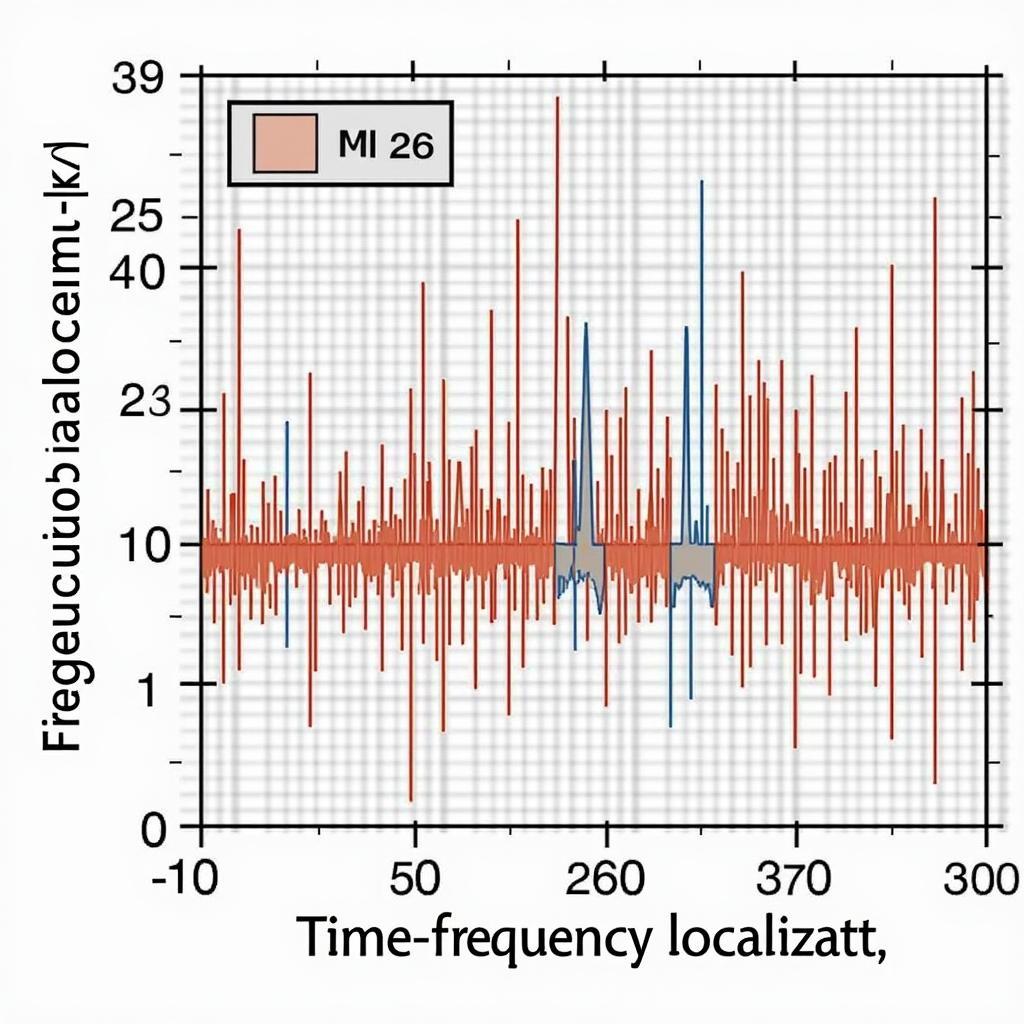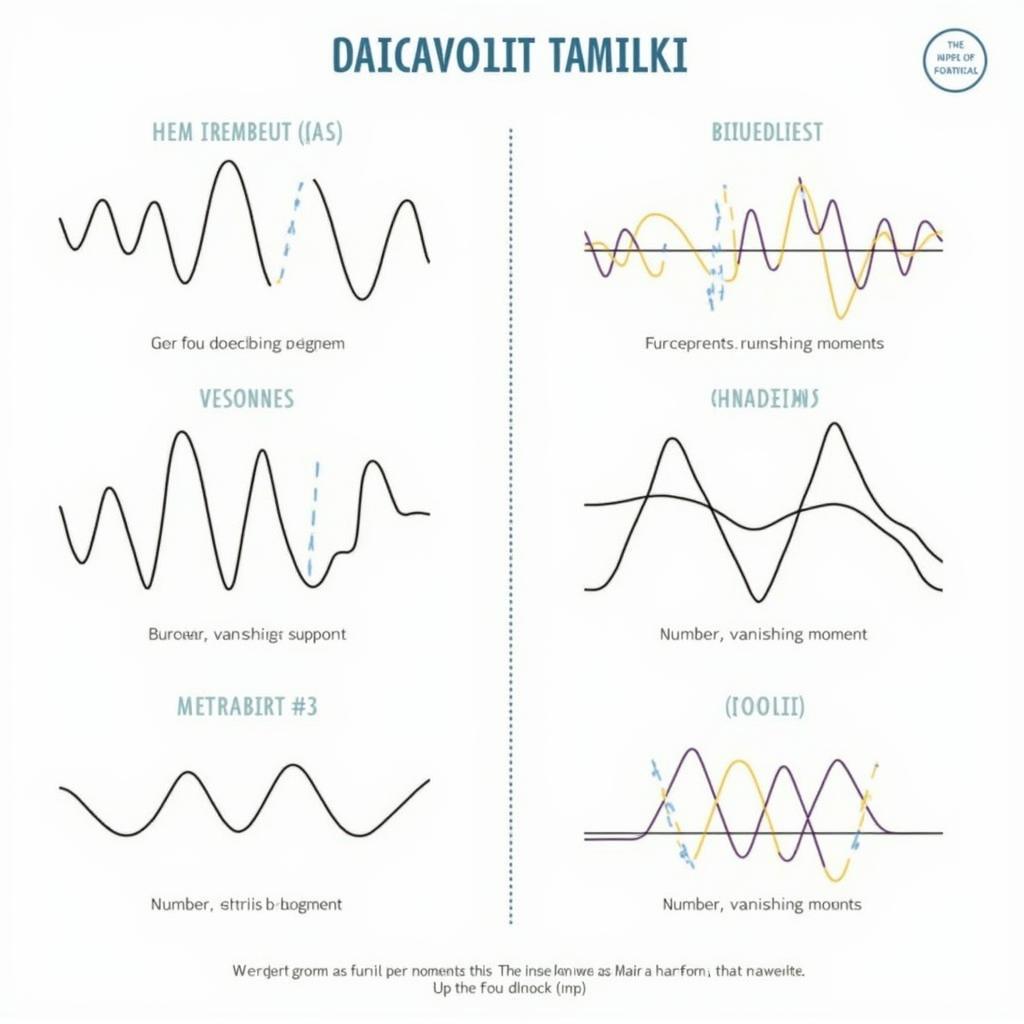Wavelet analysis offers a powerful and versatile approach to signal processing, providing a unique perspective compared to traditional Fourier methods. A Wavelet Tour Of Signal Processing unveils a world where signals are decomposed into different frequency components localized in both time and frequency, enabling a deeper understanding of their intricate structure. This approach is particularly valuable for analyzing non-stationary signals, those whose frequency content changes over time.
Understanding the Core Concepts of Wavelet Analysis
Unlike the Fourier transform, which decomposes a signal into sine and cosine waves of infinite duration, wavelet analysis uses short, oscillating waveforms called wavelets. These wavelets are scaled and shifted to analyze different parts of the signal at various resolutions. This multi-resolution analysis is a key strength of wavelets, allowing us to zoom in on specific features or zoom out to capture the overall behavior.
The Power of Time-Frequency Localization
The ability to analyze signals in both time and frequency simultaneously makes wavelets particularly effective for signals with transient features, such as abrupt changes or discontinuities. Think of a musical score: Fourier analysis can tell you which notes are present, but wavelets reveal when each note is played and how long it lasts. This time-frequency localization is crucial in fields like image processing, where edges and textures are characterized by localized changes in intensity.
 Wavelet Time-Frequency Localization Example
Wavelet Time-Frequency Localization Example
Applications of Wavelet Transforms
Wavelet transforms have found widespread applications across various disciplines, including:
- Image Compression: Wavelets provide an efficient way to compress images while preserving important details. They form the basis of the JPEG 2000 standard.
- Denoising: Wavelet-based denoising techniques can effectively remove noise from signals while preserving important features.
- Biomedical Signal Processing: Wavelets are used to analyze EEG and ECG signals, helping to identify abnormalities and diagnose medical conditions.
- Geophysics: Wavelet analysis is used to process seismic data, helping to identify geological structures and predict earthquakes.
- Financial Analysis: Wavelets can be used to analyze stock market data, identifying trends and predicting market fluctuations.
Exploring Different Wavelet Families
Different types of wavelets are suited for different applications. Some popular wavelet families include Haar, Daubechies, Symlets, and Coiflets. Each family possesses unique characteristics, offering trade-offs in terms of time-frequency localization, smoothness, and computational complexity. Choosing the right wavelet is crucial for optimal performance.
 Comparison of Different Wavelet Families
Comparison of Different Wavelet Families
Delving Deeper into Wavelet Analysis
For those interested in a more in-depth understanding of wavelet theory, resources like “a wavelet tour of signal processing solution manual” can be incredibly helpful. Similar to a wavelet tour to signal processing, these resources often provide detailed explanations, mathematical derivations, and practical examples to guide you through the intricacies of wavelet analysis.
Practical Implementation of Wavelet Transforms
Numerous software packages and libraries provide tools for implementing wavelet transforms. MATLAB, Python, and R offer dedicated wavelet toolboxes that simplify the process of analyzing signals and images using wavelets. These tools allow users to experiment with different wavelet families, analyze signals at different scales, and visualize the results.
Conclusion
A wavelet tour of signal processing offers a powerful alternative to traditional Fourier methods. The ability to analyze signals in both time and frequency simultaneously opens new possibilities for understanding complex signals. From image compression to biomedical signal processing, wavelets continue to revolutionize various fields. Embrace the power of wavelets to uncover hidden patterns and unlock the secrets of your signals. a guided tour of the fast fourier transform can also be a valuable resource for understanding another powerful signal processing technique.
FAQ
-
What is the main advantage of wavelet analysis over Fourier analysis?
Wavelet analysis provides time-frequency localization, enabling the analysis of non-stationary signals. -
What are some common applications of wavelet transforms?
Image compression, denoising, biomedical signal processing, geophysics, and financial analysis. -
What are different types of wavelets?
Haar, Daubechies, Symlets, and Coiflets are some common wavelet families. -
How do I choose the right wavelet for my application?
The choice depends on the specific signal characteristics and the desired trade-offs between time-frequency localization and computational complexity. -
Where can I find resources to learn more about wavelet analysis?
Books, online tutorials, and software packages like MATLAB and Python offer helpful resources. -
What is the difference between continuous and discrete wavelet transforms?
Continuous wavelet transforms operate on continuous signals, while discrete wavelet transforms operate on discretely sampled signals. -
How can I implement wavelet transforms in practice?
Software packages like MATLAB, Python, and R provide dedicated wavelet toolboxes for implementation.
Need assistance? Contact us at Phone Number: 0373298888, Email: SEO.backlink@gmail.com or visit our address: 86 Cau Giay, Hanoi. Our customer service team is available 24/7.